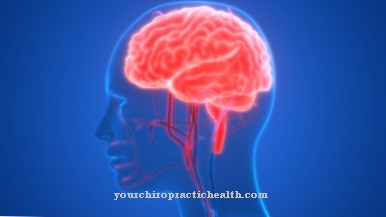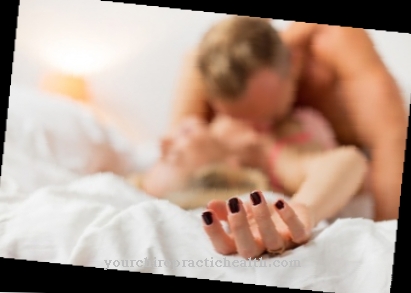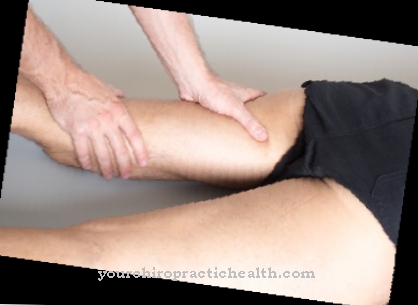Through the Visuomotor skills movements of the body and extremities are coordinated with the signals of human vision. The undisturbed interaction between the eyes and the motor skills is a fundamental prerequisite for almost every sequence of actions. For example, when a sighted person reaches for an object, their hands are controlled by the sense of sight in the brain. This coordination of visual perception on the one hand and the actions of the musculoskeletal system on the other hand is part of the sensorimotor system, which encompasses the interlocking of all sensory and motor functions of the human being. The eye-hand coordination is crucial for the visuomotor skills.
What is visuomotor skills?

Through the visuomotor system, movements of the body and extremities are coordinated with the signals of human vision.
The visuomotor performance is of great importance in the development of children's perception. Numerous possible disturbances can occur in this process, which often only become apparent when school starts and make learning more or less difficult. These children have difficulties in coordinating their daily movements, cannot process various sensory stimuli adequately and often reveal excessive fear, readiness to be aggressive or passive towards other people and the immediate environment.
Children can train their visuomotor skills, for example by improving their skills in so-called figure-ground perception. The point here is to recognize hidden and crossing figures and to be able to differentiate them from their respective backgrounds.
It is also important to train the so-called constancy of perception in children. This means, for example, to recognize special properties of any object unchanged from changing angles, although the sensory impressions in the eyes shift depending on the perspective. This ability is crucial for perceiving geometric shapes regardless of color, size and position.
Later on, the child will be able to recognize letters, even if they appear in different words or in different fonts or handwriting.
Furthermore, the perception of the spatial position is very important for a normally developed child. From a purely spatial perspective, it sees itself as the center of its world and begins to classify all objects according to their respective position in relation to itself.
Closely related to this is the perception of the spatial relationships of two or more objects to one another and to one's own person. In practice, the child needs this ability when threading pearls, for example. It is necessary to perceive the position of a pearl in relation to the cord as well as both elements in relation to oneself and to constantly redefine it. That being said, the child will develop their hand-eye coordination in a direct way.
Function & task
In the complex body coordination of a child, the sensory organs, the brain and the entire musculature work together. By nature, children want to practice these coordinated skills by playing, climbing, doing sports, etc. Irregularities in this coordination skills or even reluctance to move are the absolute exceptions and can usually be treated therapeutically in a very creative way.
Many improvements can be achieved in a playful way. The dexterity of the hands and especially the writing movement (graphomotor skills) are among the most demanding movement sequences that humans can master. This dynamic process (especially of the visuomotor skills) can be observed very clearly in childhood; from grasping the baby to guiding the school child with a pen.
This development is primarily based on visual perception, the core organ of which is the eye. It recognizes the visual stimuli and makes the decisive differentiations by being able to differentiate between proximity and distance, depths and colors. Its versatile muscles always keep the eye in the right position and ensure its permanent mobility as well as the necessary correction of the perspective. A concrete image is formed in the brain from the visual impressions of the two eyes. This depends on other sensory systems whose information is processed in the brain.
The visuomotor skills equip people with the ability to plan movements and to combine them with one another. Whether a ball is caught, grabbed for a glass or complicated technical processes of athletic disciplines are perfected, these movements always follow the same pattern.
Visual and motor impulses produce different influences on the learning of movements. They also influence this learning process at different times. Learning to move through the visual stimuli is largely independent of the motor mechanisms and peculiarities. In this context, motor learning begins later and only increases in importance over time.
If you look closely, targeted movements do not consist of individual partial movements, but of diverse sequences. Every movement is an orderly sequence, for example of several steps when walking. This becomes particularly clear with sporty movements. They are composed in a complex way from their mechanical implementation and at the same time optical perceptions. The sprinter must not leave the track if he wants to win. To be as fast as possible is not enough for him.
You can find your medication here
➔ Medicines for visual disturbances and eye complaintsIllnesses & ailments
Research has shown that the cerebellum is particularly important for a functioning visuomotor system. If damage occurs in the cerebellum, for example due to a stroke, visuomotor activity becomes noticeably more difficult. What has already been learned can only be accessed with difficulty. The execution of the movement sequences is less disturbed, but more the processing of the sensory stimuli. This effect is comparable to the state of drunkenness. Alcohol primarily affects the cerebellum, which makes it difficult for a drunk to stand on his feet.
























.jpg)



